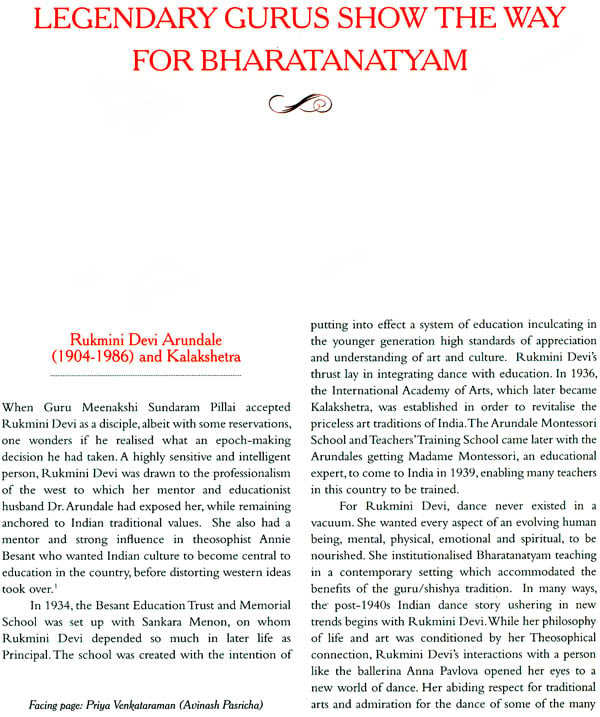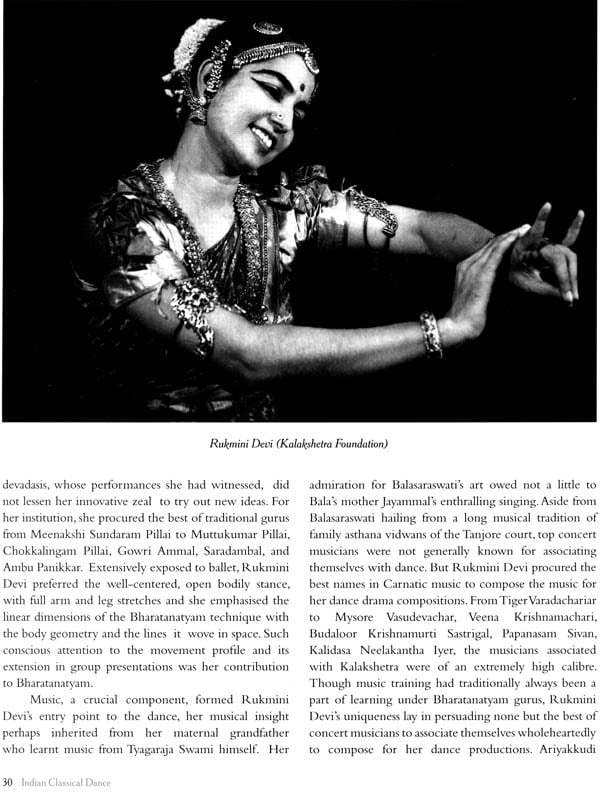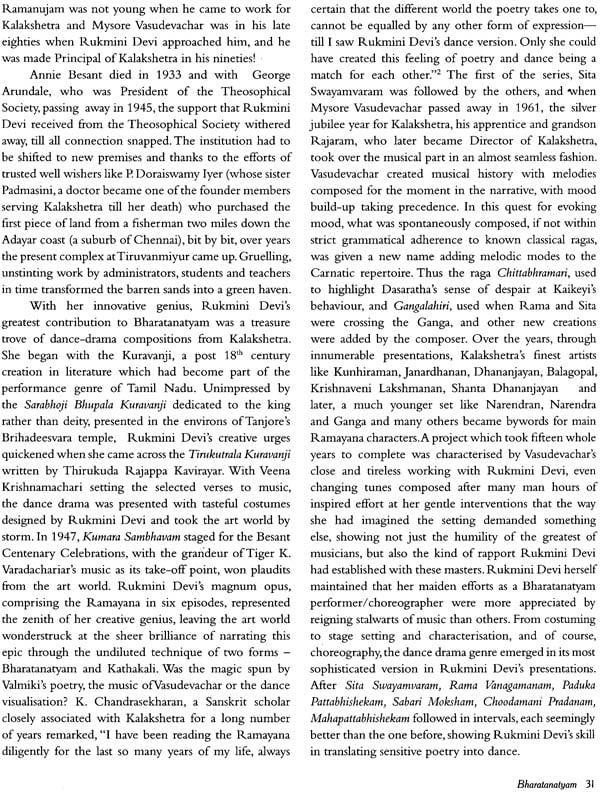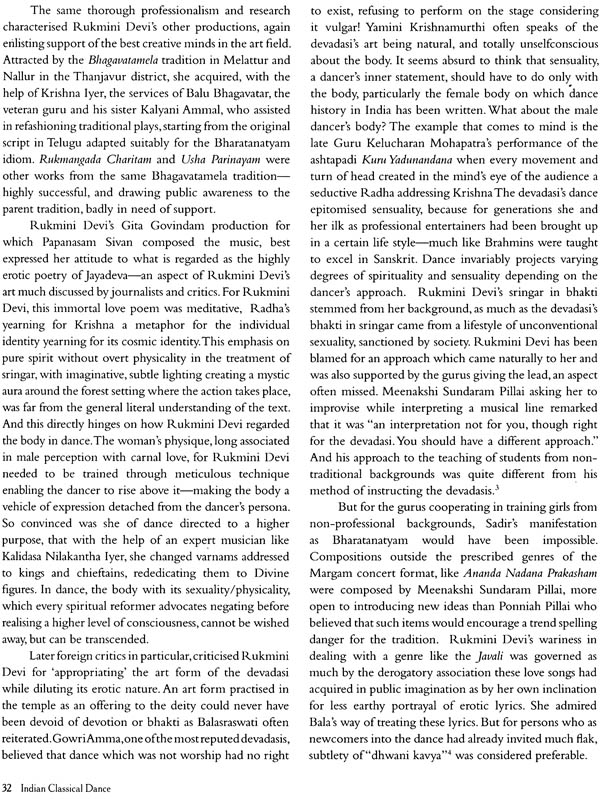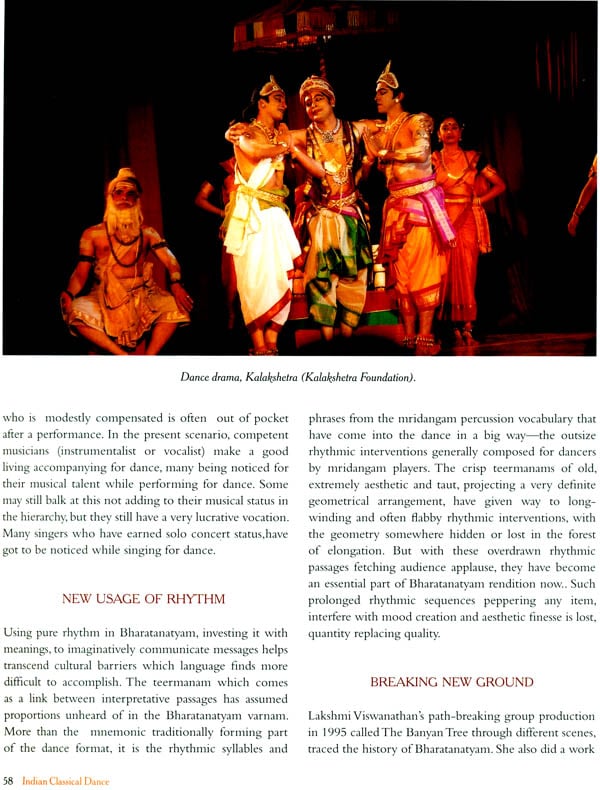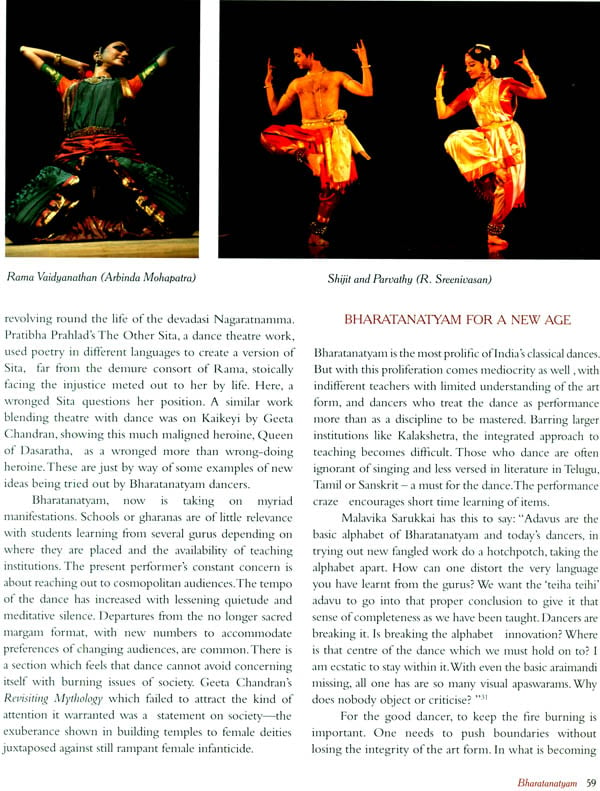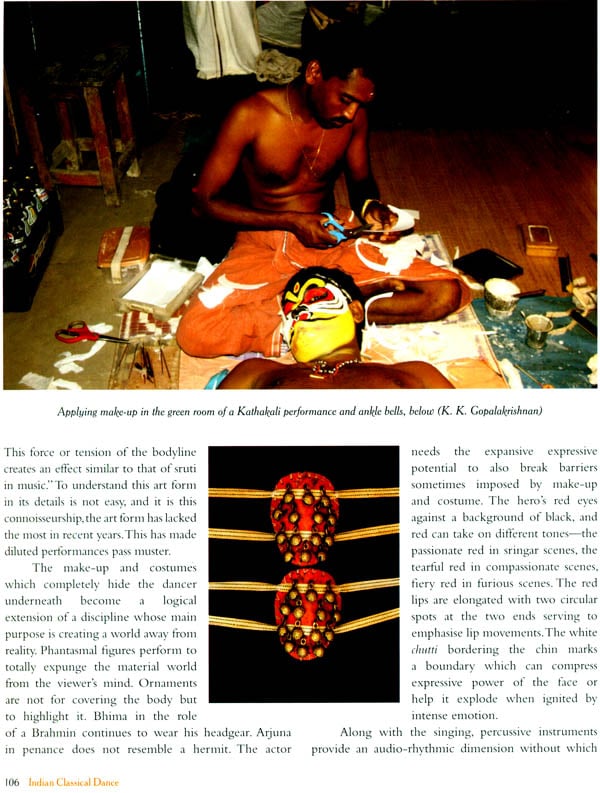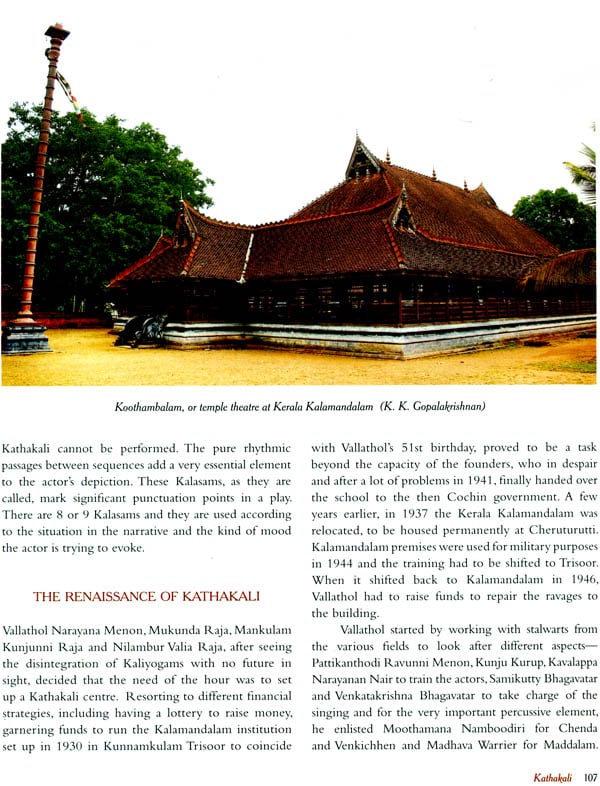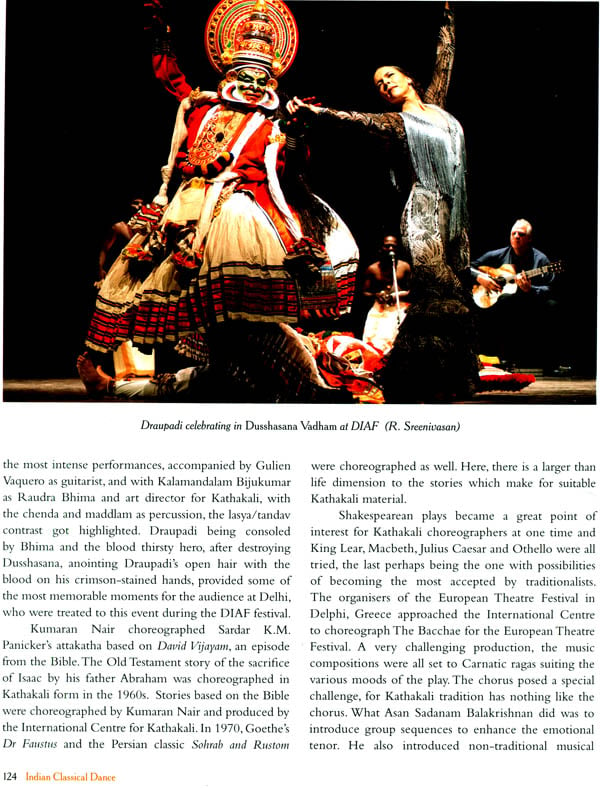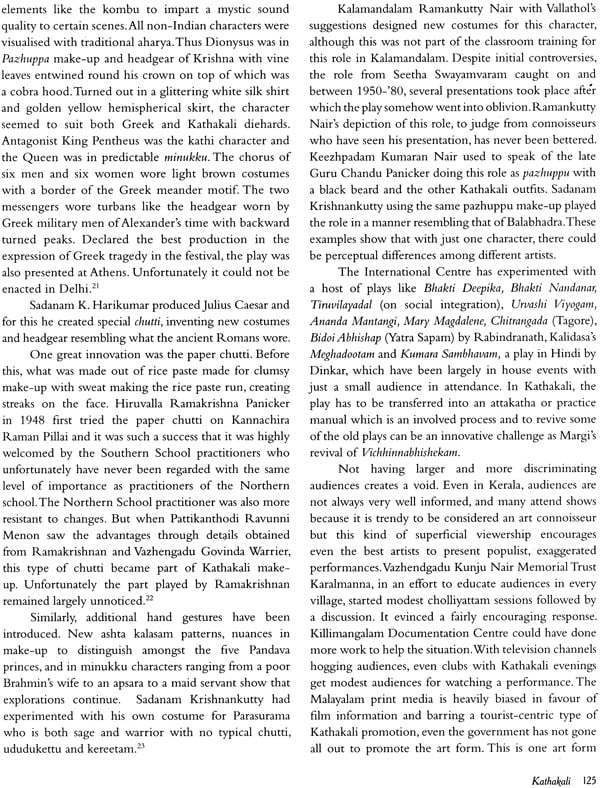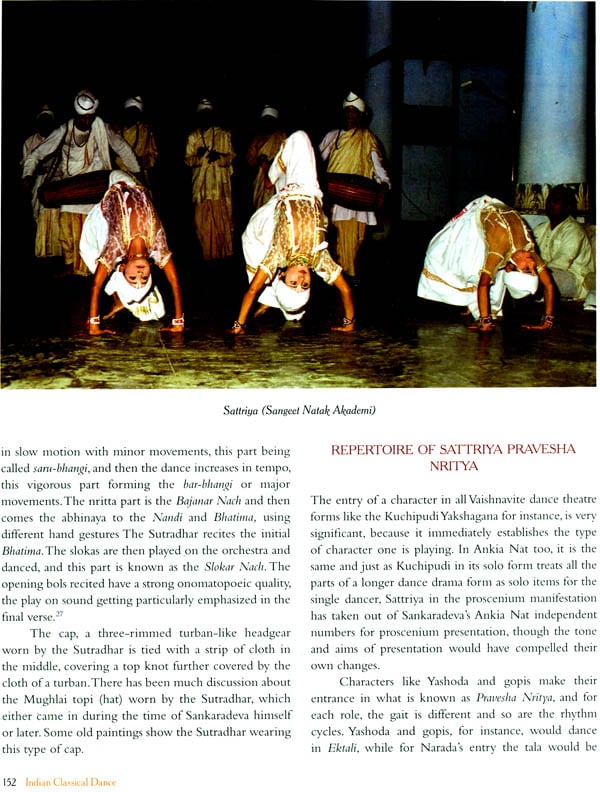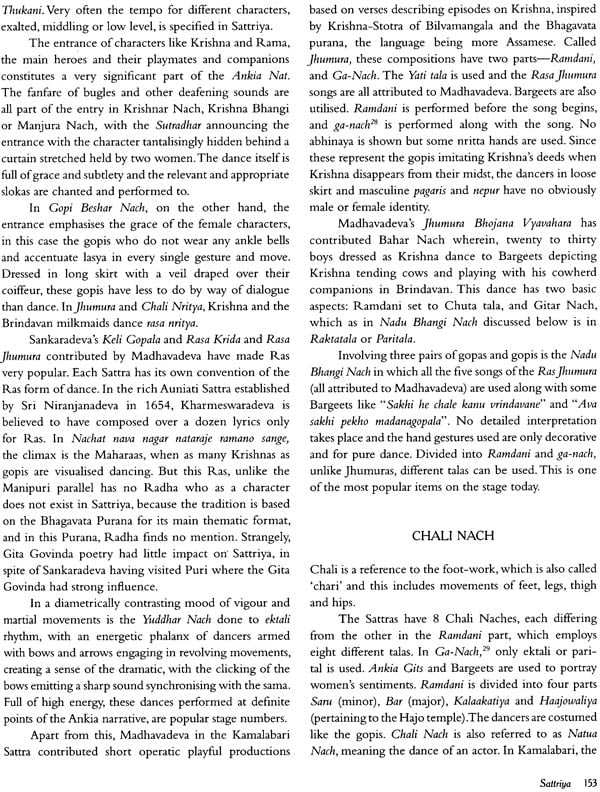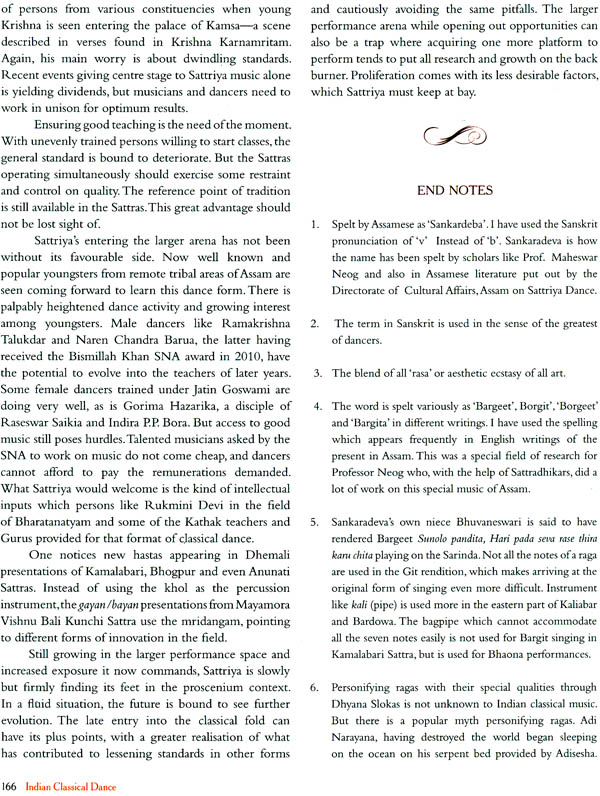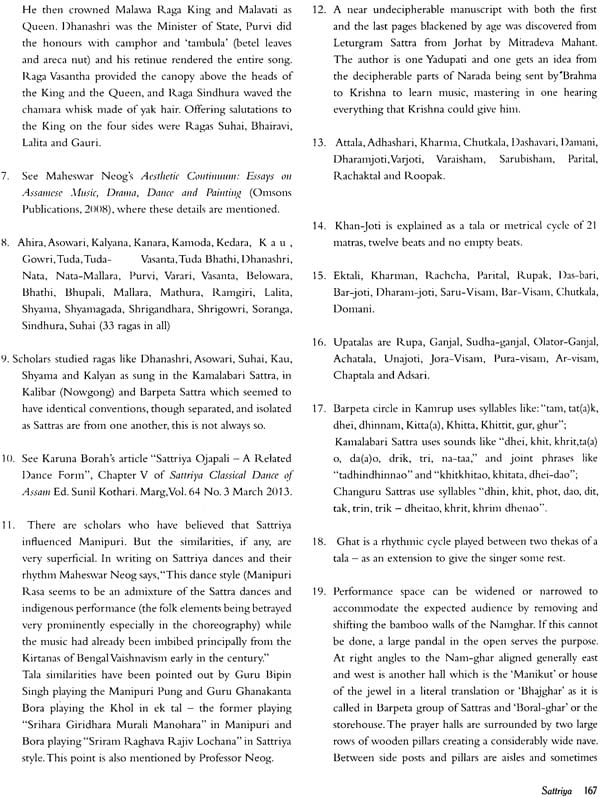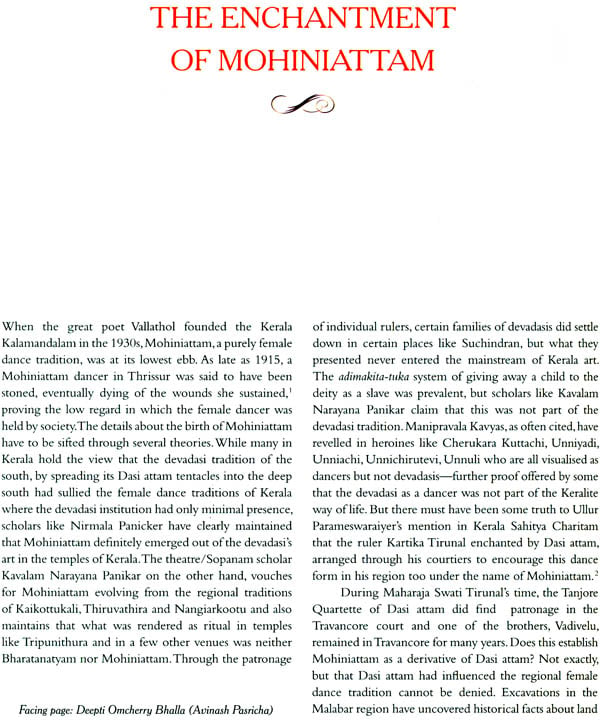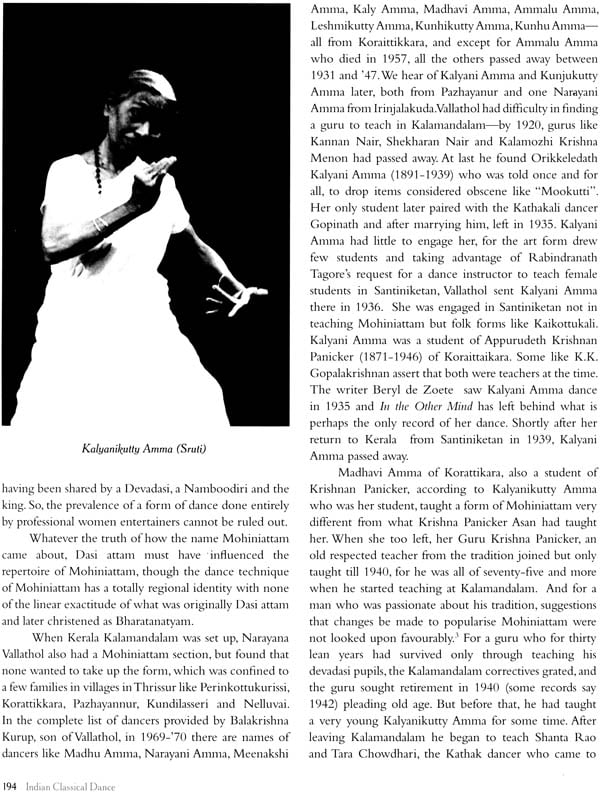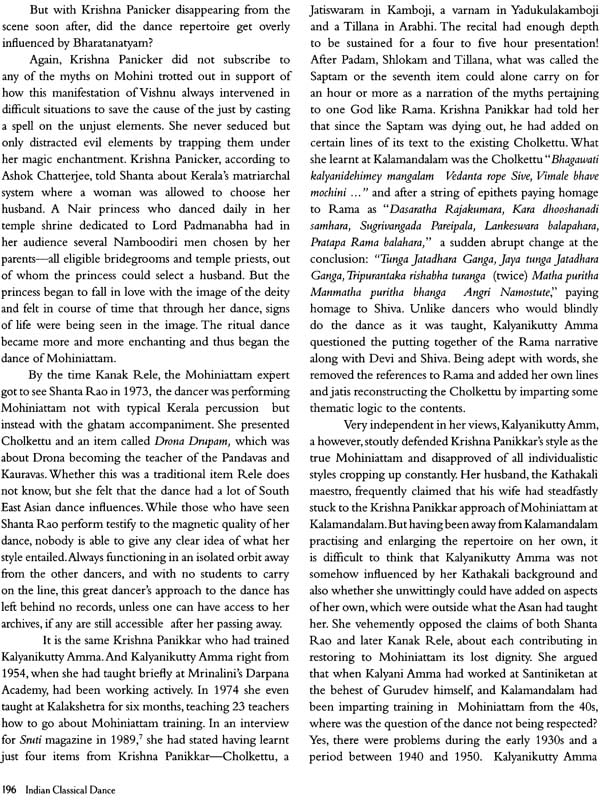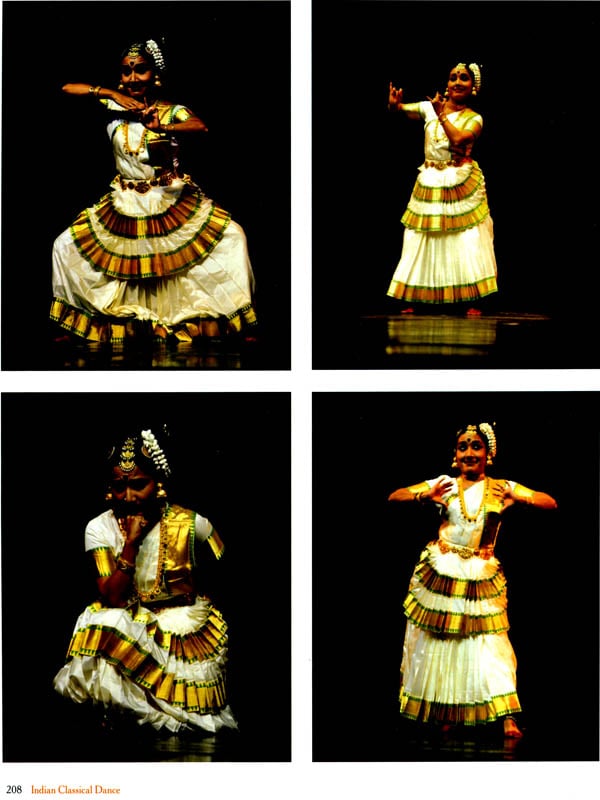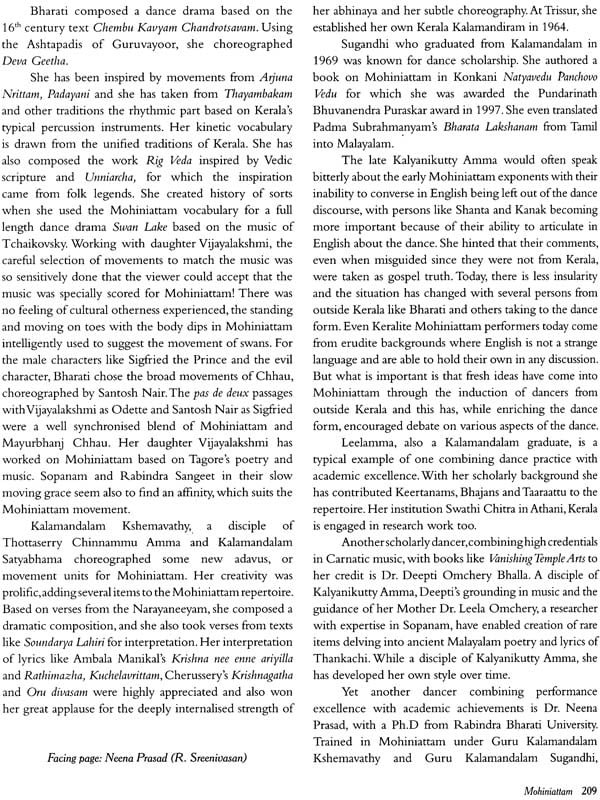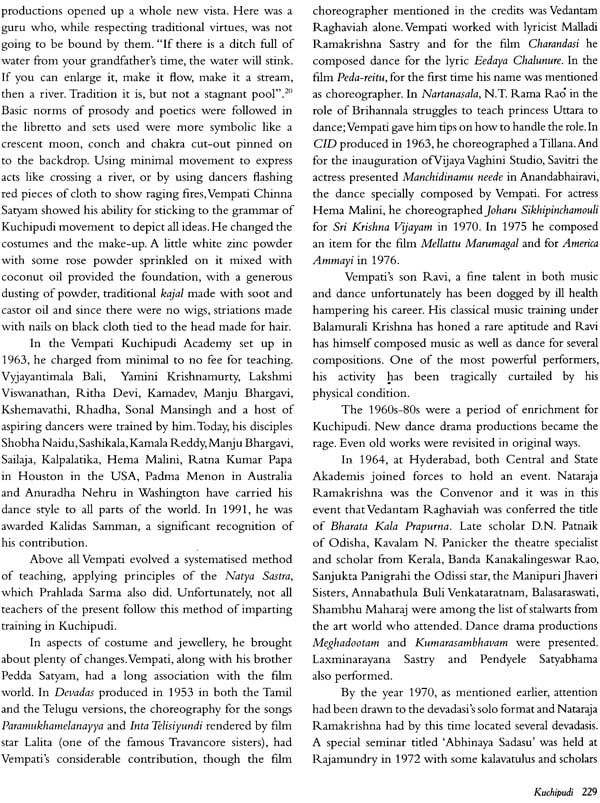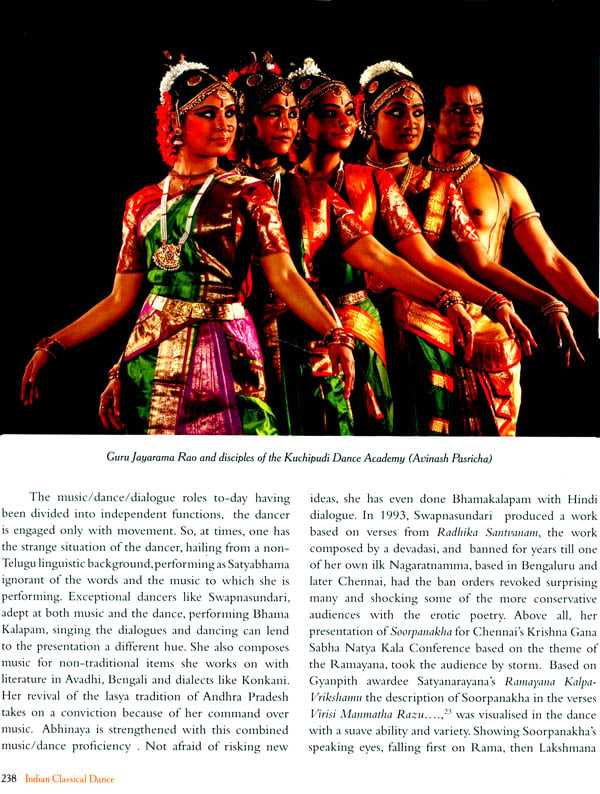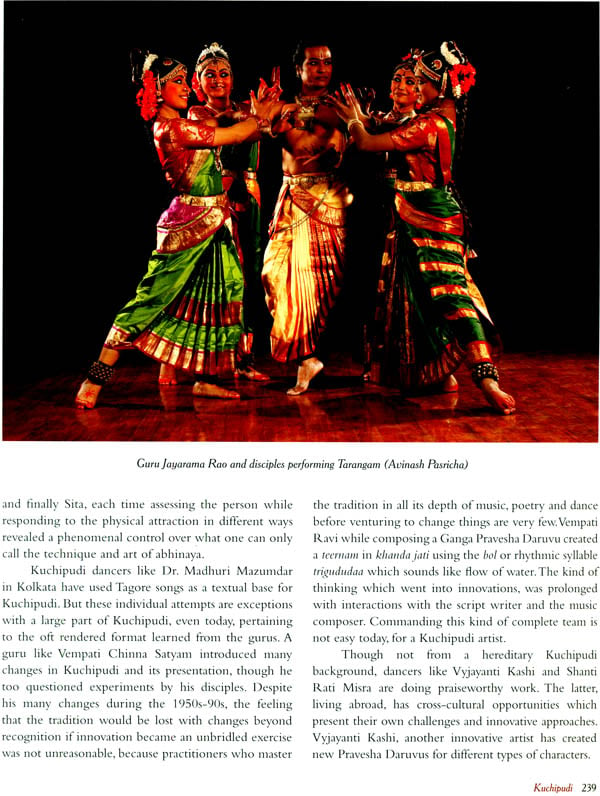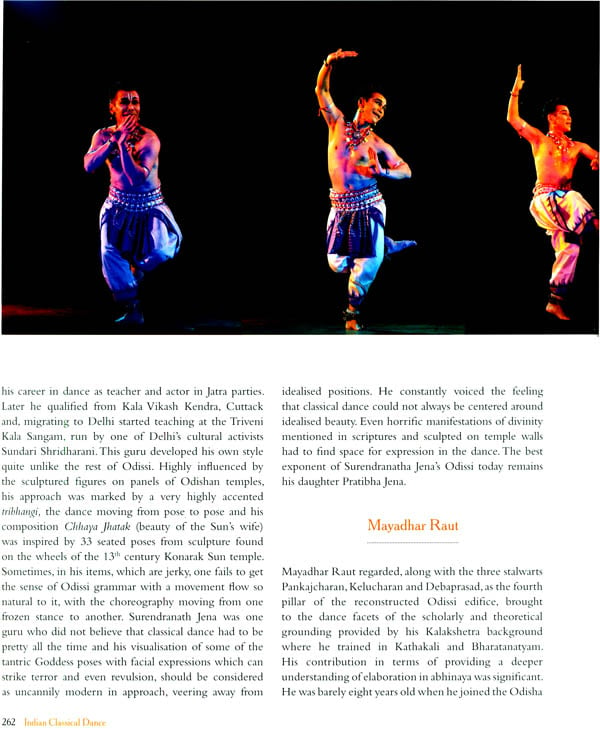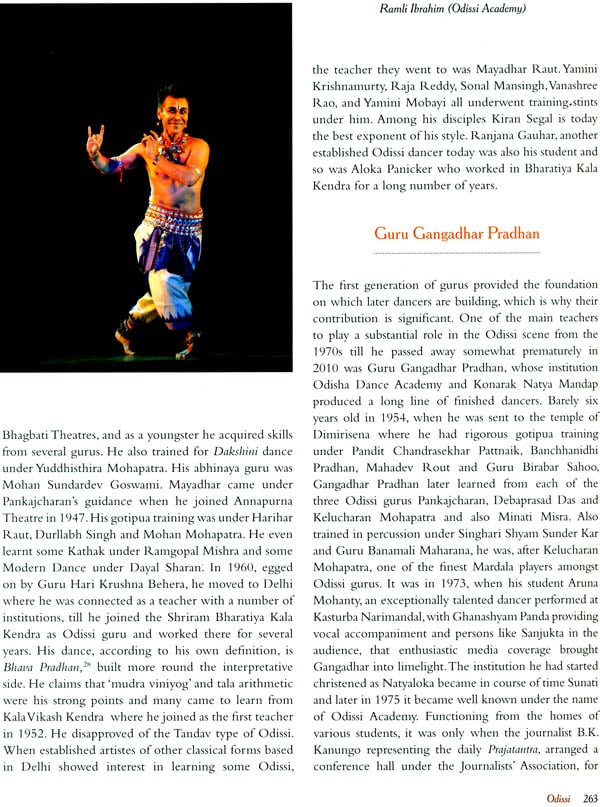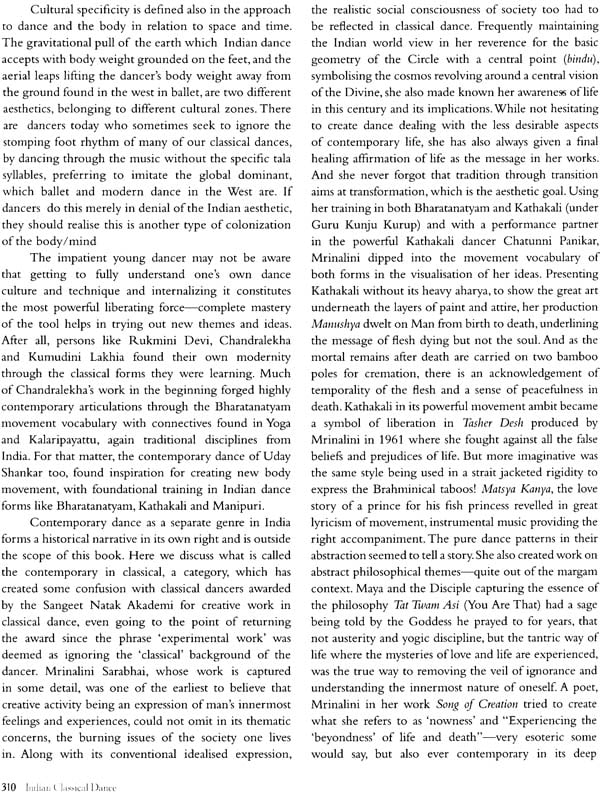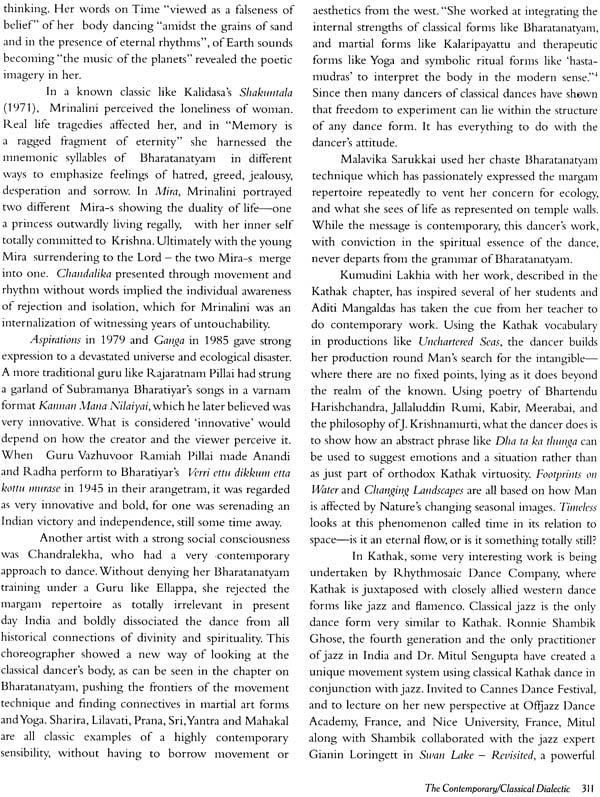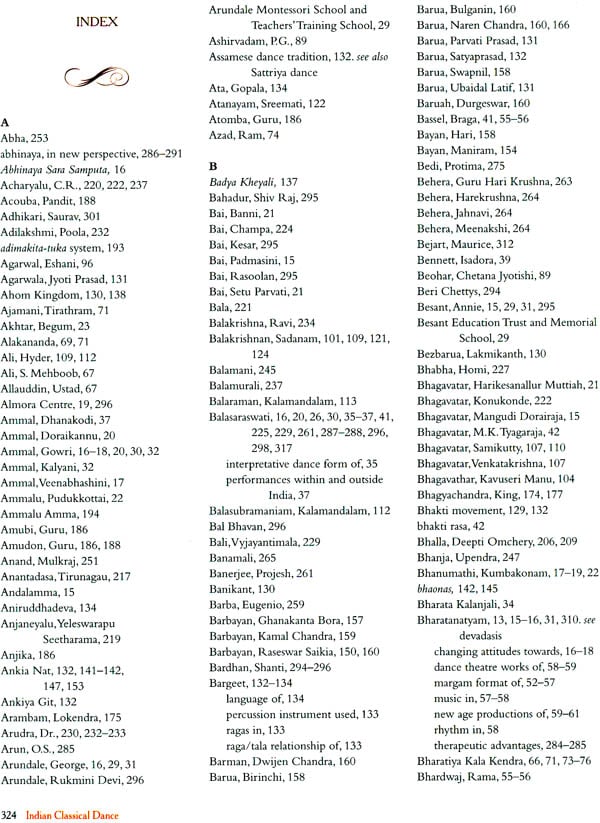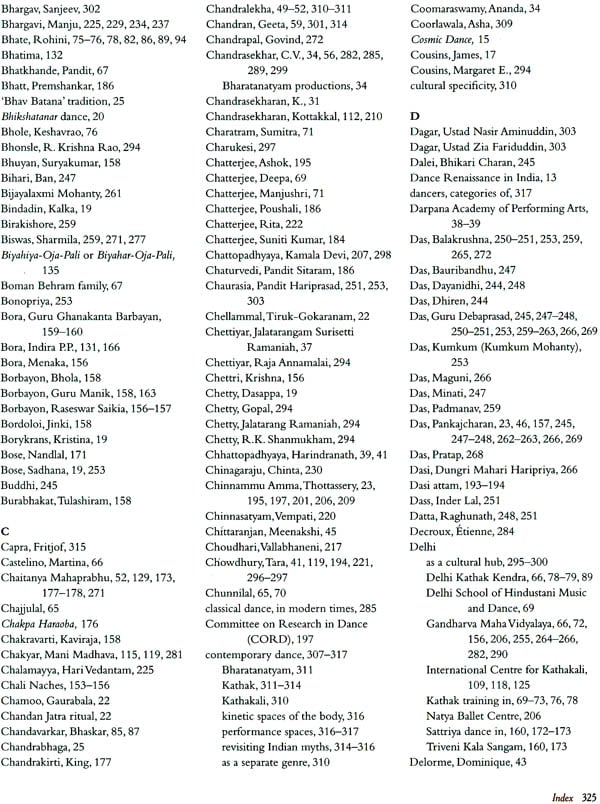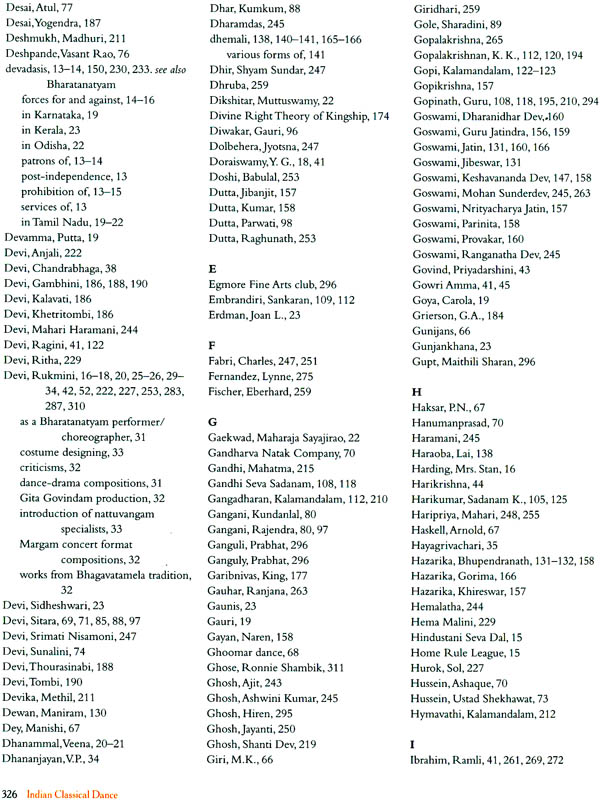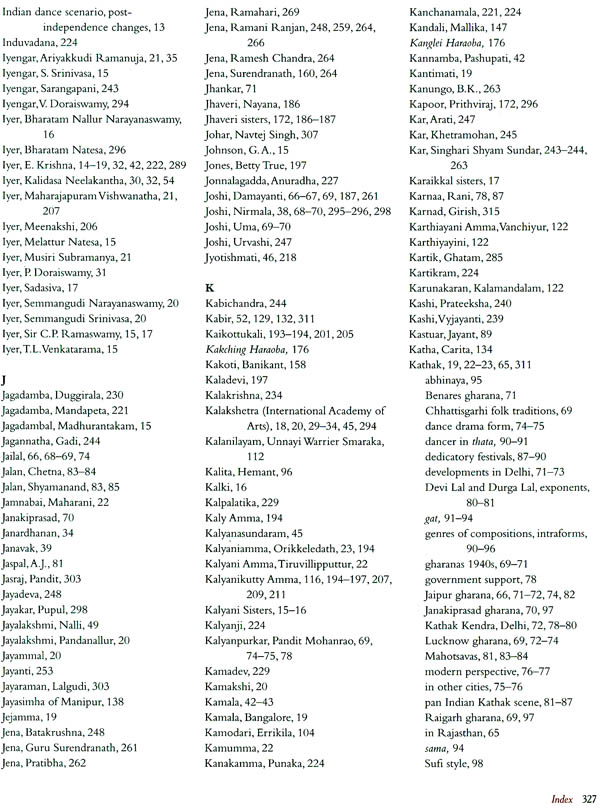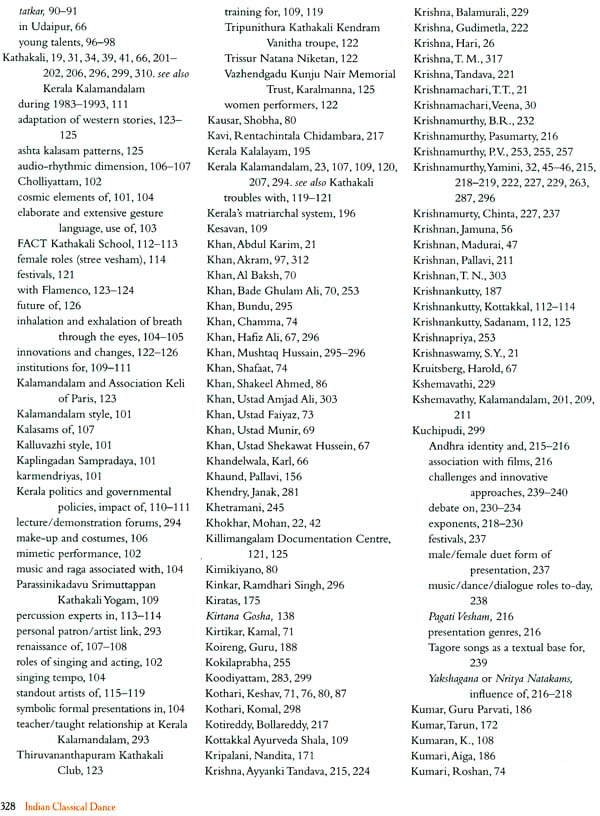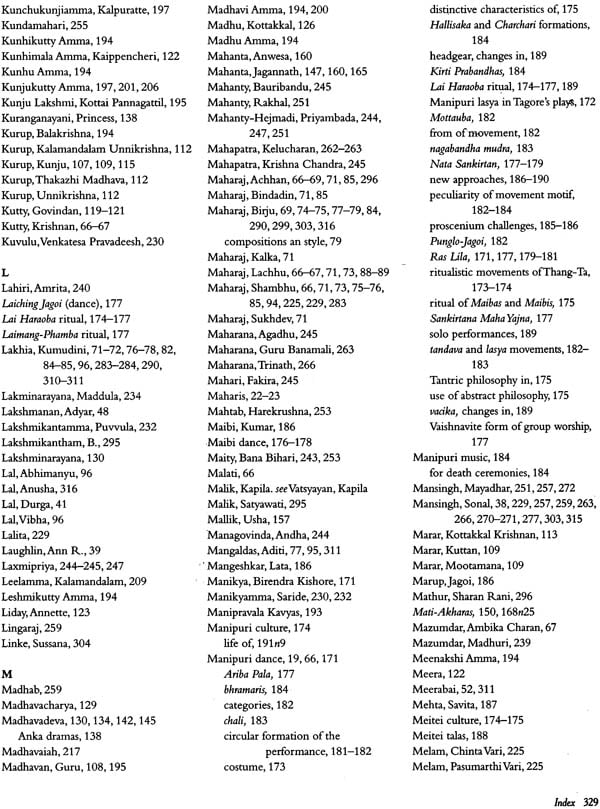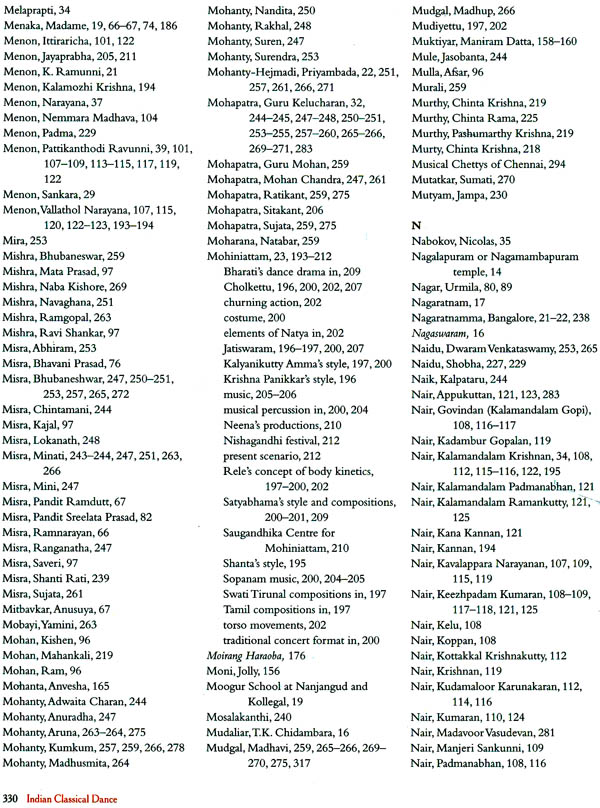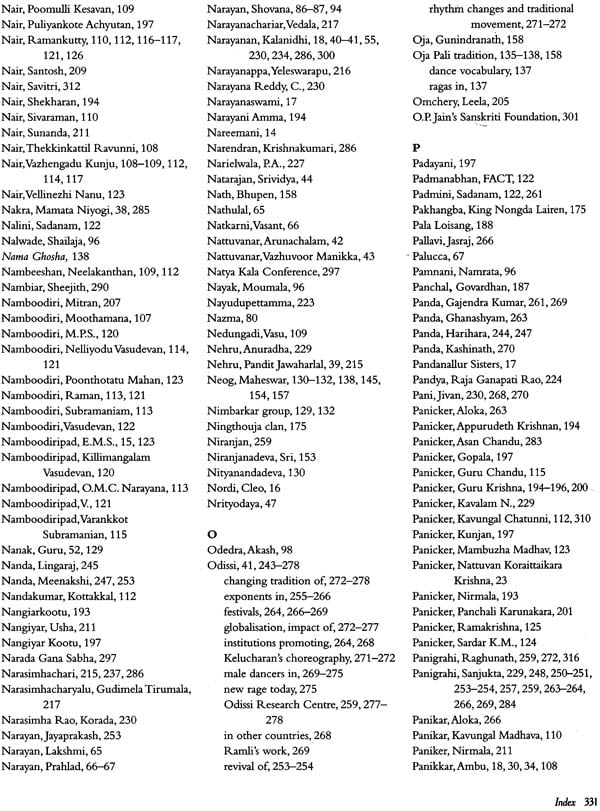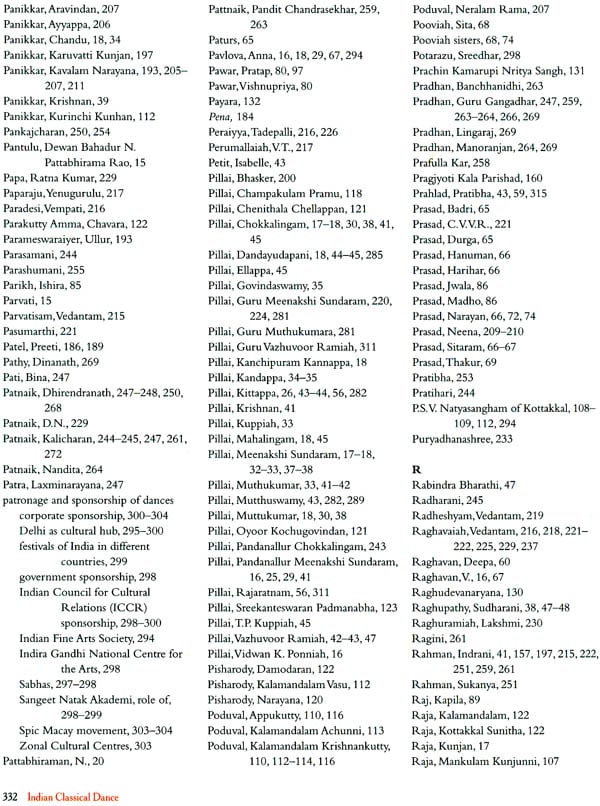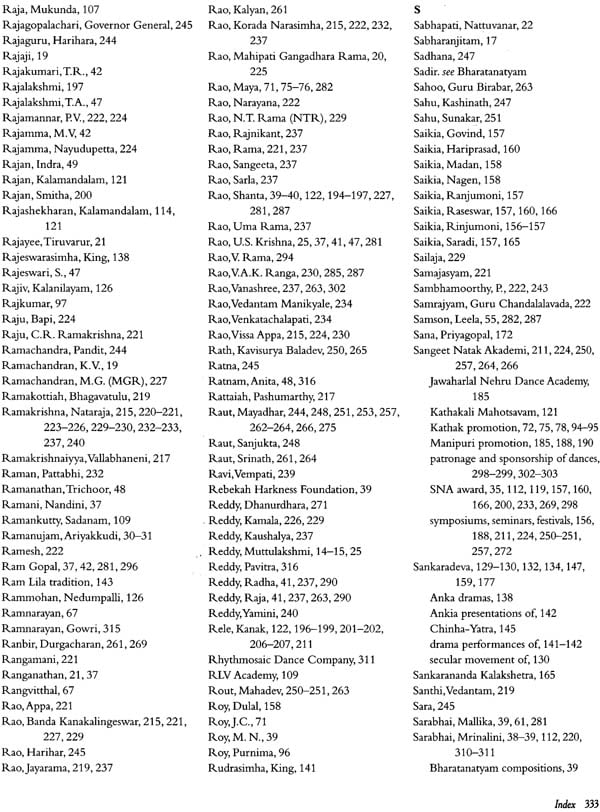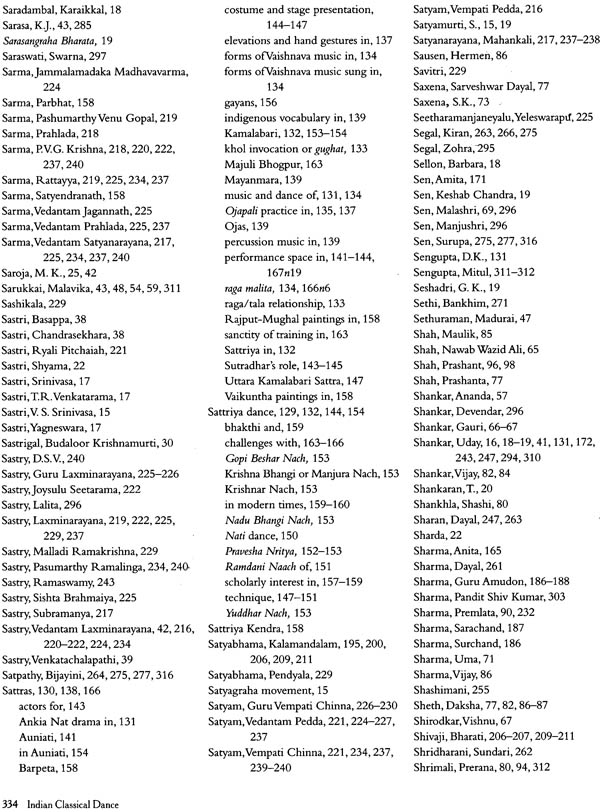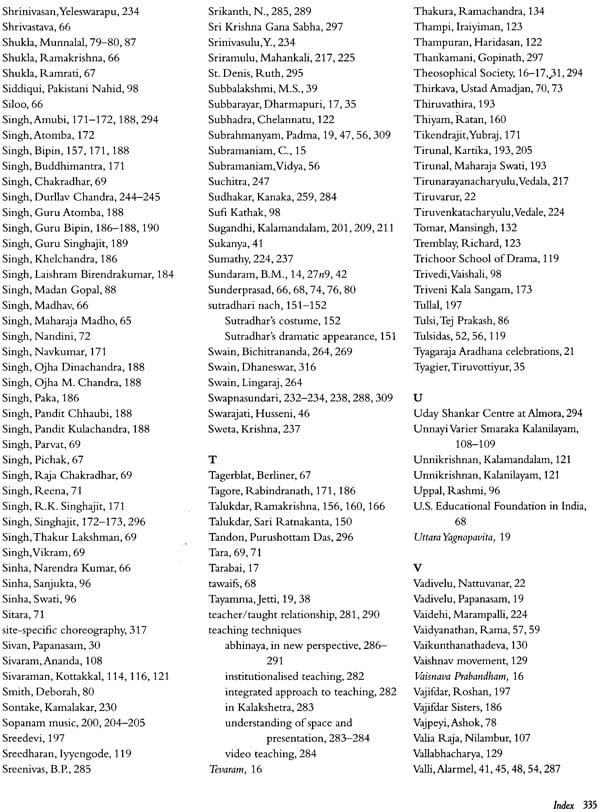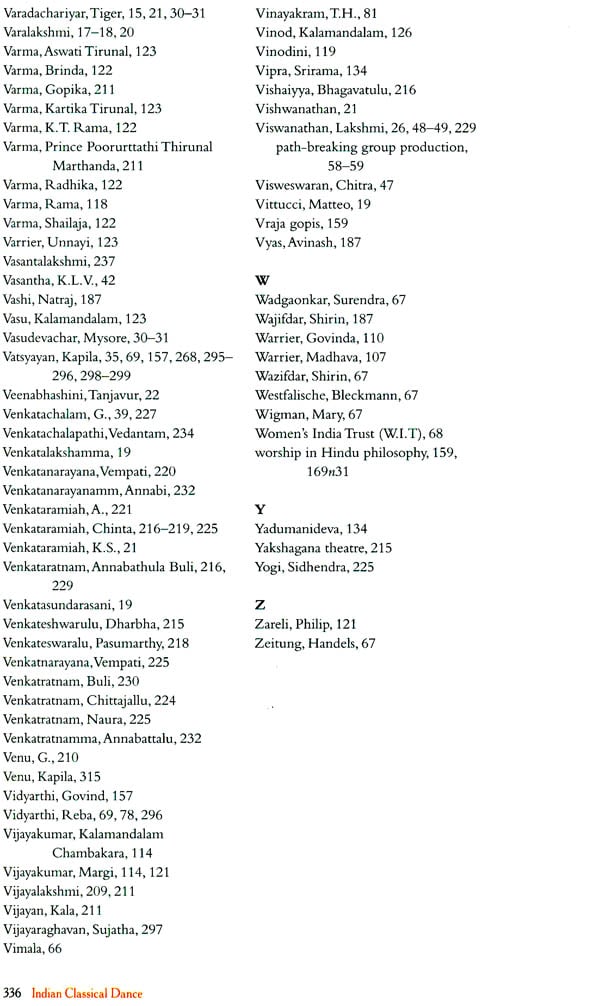
Indian Classical Dance: The Renaissance and Beyond
Book Specification
| Item Code: | NAJ993 |
| Author: | Leela Venkataraman |
| Publisher: | Niyogi Books |
| Language: | English |
| Edition: | 2017 |
| ISBN: | 9789383098644 |
| Pages: | 336 (Throughout Color Illustrations) |
| Cover: | Hardcover |
| Other Details | 11.0 inch x 9.0 inch |
| Weight | 1.80 kg |
Book Description
About the Book
Indian Classical Dance: The Renaissance and Beyond traces the journey of the evolution of Indian classical dance since the years of Independence. Covering the eight classical dance forms of India - Bharatanatyam, Kathak, Kuchipudi, Kathakali, Manipuri, Mohiniattam, Odissi and Sattriya -Leela Venkataraman seamlessly weaves together a historical perspective with the contemporary scenario.
Stripped of their association with the temple and the court, classical dance traditions in India went through a period of unprecedented change in the period marking the last few years of British rule and thereafter. From becoming part of the nationalist struggle when India was trying to rediscover its lost identity, to sharing the international stage today with dance forms from all over the world, the last sixty-six years have seen many changes in perspective and presentation of Indian Classical Dance - some intentional, others involuntary. While looking at these years closely and their impact on dance forms, one realises that this is a phase in an ongoing process, with each new generation of dancers and musicians adding to an already rich tapestry of tradition.
The book is beautifully illustrated, and multi-faceted, dealing with various aspects of dance, including sponsorship and patronage, the teacher/disciple relationship and the contemporary classical dialectic. Unique in its vast range of covering all the classical forms, Indian Classical Dance is a must read for dancers and dance historians, students and teachers of dance and those interested in this fascinating field of Indian culture.
About the Author
Leela Venkataraman’s career as a writer on Dance began in 1980 as Dance began in 1980 as dance critic for The National Herald and later the Patriot. Associated with the daily The Hindu for ever thirty years, her Friday Review column has earned her a wide reputation for her incisive commentary on the dance scene. Widely travelled, she has been a regular participant in dance seminars in India and abroad.
A prolific writer and regular contributor to dance journals like Nartanam and Sruti, she is the author of books Tradition in Transition, Step by Step Bharatanatyam, A Dancing Phenomenon- Birju Maharaj, and a book commissioned by the Children’s Book Trust on Indian Classical Dances. Her work and contribution have earned her the prestigious Sangeet Natak Akademi Award.
Preface
India's 'Classical Dance renaissance', as it has been termed by dance historians, that began as a part of the search for the true Indian identity during the period of our struggle for Independence, resulted in the emergence of refurbished, freshly energized versions of several classical dance forms in different regions of the country. This historic revisiting was not without stark changes, with many of the professional families who were the custodians of the dance pushed into oblivion and people from different social strata taking to learning the dance forms. The dances had an old history but with performers, performance spaces and audiences being different, the manifestations of classical dance as they evolved during this period, very fittingly, have been called, by scholar/ practitioner Dr. Kapila Vatsyayan as 'Neo Classical'.
The redesigned dance forms for proscenium space, acquired a concert format which was adhered to for well nigh half a century. But thereafter, cultural exchanges at the global level with an increasingly active performance scene have changed the way dance is perceived and practised in India, even while the overall aim has been to largely preserve the core identity of each form.
It is now over sixty-six years since Independence and assessing the classical dance scene from this distance of time, one gets a clearer perspective of what is happening to the dancer and the dance in this journey through the years. I have had to keep out the Contemporary and Modern Dance part, rapidly acquiring an increasing presence, because that should legitimately form a separate book. Sixty-six years of classical dance present an enormous canvas for a book, making selective approach necessary and readers may find some details missing. I have covered aspects I feel are significant, and what in the last fifty years has been part of my experience, first as a non-professional dancer and dance lover, and then as a dance writer for the last three and a half decades. My sources have been several authoritative writings (acknowledged in the book) and information derived through personally conducted interviews with artists. The perspective in which I see events is of course my own.
I have looked at each of the forms separately, because with each tradition having had its own history and special challenges, clubbing them would have been confusing. But in the second section, I have commonly dealt with aspects like the Teacher/Taught interaction and training methods, the sponsorship patterns, the kind of performance spaces for dance today, the economics of dance and the constant confrontation of the old and the new, as applicable to the entire scene. The opening chapter, the broad details of which are known to most people, is just an introduction to set the record straight and explain how societal changes created the stage for this revival and resurgence. If the chapter weighs too heavily with information on Bharatanatyam and Tamil Nadu, it is because it was this dance form which was particularly involved in the revolt against the devadasi, and it was in the South that the movement was openly debated-its results echoing throughout the country, though disaffection with the professional female dancer had spread throughout India. While all the chapters deal with the period of the neo-classical only, the Manipuri chapter has a few more details because people seem less informed about this dance form. Similarly in the Sattriya chapter, I have mentioned the tradition still practised in the monasteries alongside the growing proscenium version becoming very popular today.
There is a vacuum being felt in Classical Dance today with most of the traditional gurus having passed away. Without the presence of these Gurus who ensured that dance traditions did not change beyond recognition, the future seems uncertain. While a constantly swelling section of person is involved in the performance part, there is a feeling that the enormous build-up of performances is lop sided, with audiences dwindling for the dance. An era has passed and one doubts if we will see the likes of another Balasaraswati or Kelucharan Mohapatra or Shambhu Maharaj. The colossus Pandit Birju Maharaj is fortunately still with us. But among his large spread of highly talented dancers, I do not see another Birju Maharaj in the making.
But there is a small section of hard working, talented youngsters willing to be guided by the right gurus, who are eager to take the art forward without diluting its intrinsic identity. The future of Classical Dance will be shaped by them.
Introduction
The Storm Before A New Era In Dance
1930 to 1970 are often referred to as the years of Dance Renaissance in India. This was the time when classical forms, after a lean period during the British rule, were revisited with gusto and revived in fresh, reconstructed versions for the proscenium, the new manifestations divested of years of ritualistic association with the institutions of the temple and the court. But before this development, a period of trauma and turbulence shook the traditional families practising dance for years. Very fittingly, a historical glimpse of the period in an article of a well known journal titled the Renaissance as "fateful and fruitful".' Before looking at the post-independence changes that have taken place in the Indian dance scenario, influencing content, presentation, audience composition and ways of approaching the dance by dancers and onlookers, a brief look at the pre-neo classical efflorescence would put the story in the correct perspective. While these details are not unknown to those informed on dance history, the story bears repetition. While the backlash from societal censure of the female entertainer was felt in all parts of the country, it was Sadir (later named Bharatanatyam) which was in the forefront of this battle for and against the devadasi (the dancing female attached to the temple and the court), with the movement in Madras (now Chennai) being openly debated and documented with public participation.
The Legacy Of The Devadasi
The devadasi, the proverbial dancing girl of India, romanticised in western ballet productions as La Bayadere (The Temple Dancer), had for centuries functioned as part of a sanctioned sociocultural institution. Nurtured by both royalty and the temple, her services, ritualistic and entertaining, were addressed to the deity in the temple and royalty in the court respectively. But from the 19th century, when Britain's domination over the country began to emasculate both patrons, the king and the temple, troubles for the devadasi began. Worsening steadily, societal censure of the devadasi reached a peak in the 20th- century, even as the movement for Independence was gaining momentum. By the time India attained Independence in 1947, the devadasi, struggling for lebensraum, had lost hers, with her role in the temple severed through a law abolishing the practice of initiating young girls for dancing in temples.
Devadasis were never a caste group. As a community with dance as a vocation, they had closely knit formal relationships, particularly in the south, with their patrons who were generally from the upper caste communities like the Chettiars, the Mudaliars, the Pillais and the Brahmins. The land owning class, after a century of political uncertainties, benefiting from a more dependable legal system during the British rule, had grown in prosperity. This class with its grand marriage celebrations and festivals where entertainment by the devadasis was the preferred mode, formed the main group wherein individual devadasis found patronage even after temple and court could no longer provide sustenance.
With the ongoing struggle for nationhood, there was a move towards rediscovering the essential Indian identity lost in the confused westernised value structure imposed by the British. In regions like Bengal however, literate Brahmins, Kayasthas and Mudalis imitated western liberal values reconciling them with a reformist Hinduism. In the south it took a different turn, with a strong anchorage to the past making urban reformist zeal seek to reinforce traditional culture, while modifying its emphasis for a contemporary socio/political climate.
It is believed that having to succumb to the whims of independent patron zamindars, with established institutions like royalty and the temple, no longer able to provide patronage, ultimately led to the devadasi's art compromising aesthetics and dignity. This class of professional entertainers, with whom liaisons were accepted as a mark of high standing in society, were gradually being looked upon as immoral, and they were maligned as the proverbial moral corrupters of society. With temples disenfranchising them, many devadasis migrated to urban areas, trying hard to eke out a livelihood. An interview by B.M. Sundaram, an authority on nattuvanars and devadasis, with one Bharatiamma from the devadasi clan associated with the Nagalapuram or Nagamambapuram temple, provides interesting insight. 2 Originally in Tamil Nadu and now part of Andhra Pradesh, this temple-built in the time of the Vijayanagara emperor Krishnadevaraya as the Vedaranya Perumal temple-was rechristened in the name of the Queen mother Nagamamba. The tattered remains of a firman issued by a ruler of Chandragiri were found with Bharatiamma. This was the decree giving her grandmother Nareemani, a famous devadasi known for her performances in the Gangaikonda mandapam, the permission to maintain a personal army of 400 soldiers who would be made available to the ruler should he need their help. In a complete reversal of roles, today Bharatiamma was reduced to selling paddy and cow dung cakes in order to make a living.
Forces For And Against The Devadasi And Her Art
Despite the fallen glory of royalty, Sadir, as the dance was then known muddled along in the 1930s-40s through all the criticism of the devadasi, when a feminist Dr. Muttulakshmi Reddy, born of a devadasi mother, rose as the prime crusader for abolishing the institution altogether, thereby sealing the plight of these women. In her student days, due to the stigma of her devadasi connections, Muttulakshmi Reddy had found entry into schools difficult which must have left a very strong impression. In 1927 when a motion was introduced in the Council of State in Delhi to deliberate on the evils of girls being initiated as devadasis, the Law members believed that the existing provisions in the Indian Penal code were sufficient to deal with malpractices and that there was no need for further legislation. In November 1927, the Madras Legislative Council of which Dr. Reddy was a member, passed a resolution recommending that the Madras government think of preventive legislation against erring devadasis. Not till 1929 did the Madras Council pass an amendment to the Hindu Religious and Charitable Endowments Act, empowering temple authorities to disenfranchise erring devadasis from temple connections and revoke by civil proceedings the manyams (land given to each devadasi) and the produce which supported her farn.ily. In 1930, Reddy introduced a bill in the Madras Council seeking to prohibit the practice of the devadasi's dedicatory ceremonies in any temple.
Parallel with these developments, another chapter was unravelling in the city of Madras. There appeared on the scene the compelling figure of a lawyer E. Krishna Iyer, who was also a social/cultural activist, artist and freedom fighter. Some facts about his background would be interesting to note, for he was one of several professional people from different disciplines who became involved with the art world, ultimately saving the dance from oblivion. Krishna Iyer's youth spent in Kallidaikuruchchi, known as the 'Brahmin Chettinad' in the early years before 1916, had given him a special feel for music and dance. Thereafter he migrated to Madras where, in 1918, he graduated from the Christian college and went on to study in Thiruvananthapuram and Madras, obtaining his B.L. in 1927. Becoming an active member of the Home Rule League, of which Dr. Annie Besant was the leader, Krishna Iyer joined the Indian National Congress and served as Joint Secretary of the Students' Convention. Drawn into supporting the Swarajya party by leading figures like S. Srinivasa Iyengar and S. Satyamurti, he and his wife Parvati toured all over the south singing patriotic Bharatiyar songs. As Vice President and later President of the Hindustani Seva Dal till 1936, Krishna Iyer was also part of the Boycott Simon Commission movement in 1929. Along with these patriotic concerns was a staunch love for Sadir. Plunging into the Satyagraha movement, Krishna Iyer was imprisoned by the British for six months and this enterprising young man used his days in jail trying to educate great leaders like Satyamurti, C. Subramaniam and E.M.S. Namboodiripad on the greatness of an art form like Sadir. His own deep involvement with the art scene began in his early years in 1923, with an introduction to theatre as Ratnangi (a female role) in the play Sarangadhara by Sambanda Mudaliar. In order to equip himself fully for the role of Malavika in Malavikagnimitra, in 1925 he decided to get initiated into dance through Madhurantakam Jagadambal, a devadasi veteran living in Triplicane in Madras. In fact, his acting is believed to have changed the attitude of some of the educated public that had gone along with the tirade again t the devadasi without ever having seen an actual performance! Padmasini Bai, daughter of devadasi Andalamma, and Melattur Natesa Iyer of the Bhagavata Mela tradition were present and highly appreciative of Krishna Iyer's rendition of the role of Malavika. When Natesa Iyer suggested full-fledged training in the dance, Krishna Iyer initially demurred. Natesa Iyer persisted and soon, Krishna Iyer acquired greater expertise and began to give solo Sadir performances costumed in female robes, supported by Doraiswamy Nattuvanar as accompanist and Mangudi Dorairaja Bhagavatar as mridangist on stage.
He became known for the 'plate and pot dance', which he christened Cosmic Dance, as it was based on quotations from Manusmriti, with the ocean represented by the plate, and the mud pot with sun and moon painted on it, representing the rest of the cosmos. It was a historic event for the world of performing arts when in 1927 the Indian National congress decided to hold its annual convention in Madras. The Committee members with Krishna Iyer as Joint Secretary and Member of the Congress Committee unanimously agreed on holding an all India Music Conference at the same time. This event sowed the seeds for the birth of the Madras Music Academy-inaugurated in 1928 by Sir C.P Ramaswamy Iyer. Largely music oriented, the Academy soon decided to support the dance of the devadasi even as the Madras Council introduced the bill seeking to prohibit the devadasi dedicatory ceremonies in temples. Overruling notable members like C.P Ramaswamy Iyer, T.L. Venkatarama Iyer and the Right Honourable V S. Srinivasa Sastri who doggedly opposed Sadir, the Music Academy presented the Kalyani Sisters in March 1931.
In 1932, Krishna Iyer decided to lock horns with Dr. Muttulakshmi Reddy, one fully supportive of the dance and the other convinced that the institution of the devadasi had become a tool for the worst kind of exploitation of young girls who as unsuspecting minors, were being pushed to the fringes of society, having to lead immoral, often promiscuous lives."
In the same year, amidst the cacophony of opposing voices, The Madras Mail with the enterprising Assistant Editor G. A. Johnson decided to hold a public meeting during the Annual Conference of the Academy to discuss the issue of the devadasi and the dance. The proceedings and subsequent developments with views for and against Sadir, were published in The Mail. A huge pandal erected opposite the Ripen buildings in the (then) People's Park attracted about 2,000 people. There was general agreement that small private performances were the prime reason for the devadasi's art being brought down to a low level. Musician Tiger Varadachariyar read out a letter from Johnson, who with an outsider's objectivity, advocated alternative professional opportunities for the devadasi.
Among the big social figures present, E. Krishnaswamy Iyer maintained that music and natya went together, and that denying one would be destroying the other. He argued the need for a certain number of people who could devote themselves entirely to this art. Not all agreed with this view. Dewan Bahadur N. Pattabhirama Rao Pantulu argued that if ghee, which is a necessary ingredient, is becoming rancid, one had to change the vessel. The general tenor of the discussions was mixed, though many protagonists tended to be looking at the art form in separation from the devadasi.
In 1933, the Music Academy presented a Sadir performance by the fifteen-year old Balasaraswati, with Uday Shankar seated in the audience. T.K. Chidambara Mudaliar and Kalki, both strong antagonists of Sadir, became dance enthusiasts after being treated to Bala's dance. The Madras Music Academy, looking at dance more closely, serialised in its Journal a rare useful work on Bharatanatyam, Abhinaya Sara Samputa. In 1933, the sixth Conference by the Music Academy became one of consolidation. Presiding over the eleven day event was Vidwan K. Ponniah Pillai, professor of Music, Annamalai University, descendant of the third brother of the Tanjore quartet Sivanandam. On the third day of the Conference Pandanallur Meenakshi Sundaram Pillai, the legendary guru and Bharatam Nallur Narayanaswamy Iyer gave lectures on dance. A resolution was moved to open a school of dancing. Mrs. Stan Harding pleaded that the old style of dressing be brought back and that under no circumstances should ritual dances be transplanted. V Raghavan argued for steps to be taken to ensure that Tevaram, Vaisnava Prabandham, Bharatanatyam and Nagaswaram formed a daily part of temple offering. In the meanwhile, the Academy, almost unobtrusively, from 1932 onwards, decided to substitute the name Sadir which had acquired a very unsavoury reputation with the name Bharatanatyam (the provocation for the name bharatam being the Tamil word meaning dance (like Bharatam Natesa Iyer), rather than Bharatas Natya Shastra as inferred by some later scholars).
The Academy also presented performances by Gowri Ammal and other devadasis. While Krishna Iyer vociferously worked to garner support for the dance, his energies would seem to have been less directed at rescuing the devadasi from extinction, and more on saving the dance. He was on the best of terms with the reigning queens of dance and music of the time. By this time, public criticism against the devadasi had assumed proportions that needed a Herculean effort to stave off, and Krishna Iyer in all probability felt that the battle for the devadasi had gone beyond retrieval. Instead of throwing out the baby with the bathwater, he decided to save the art form at least. Some future critics did accuse him of deliberately working to encourage upper caste women to take to the dance, a step ultimately taking the art away from the traditional performers.
Contents
| Acknowledgements | 7 |
| Preface | 9 |
| Introduction | 13 |
| Legendary Gurus Show The Way For Bharatanatyam | 29 |
| Kathak: From Durbar to proscenium | 65 |
| Sattriya in Monastic and Proscenium Menifestations | 129 |
| Manipuri: Striking a Uniquely Different Note | 171 |
| The Enchantment of Mohiniattam | 193 |
| The Changing Faces of Kuchipudi | 215 |
| Odissi: The oldest in a post Independence Menifestation | 243 |
| Transmission in a Changing Teacher/Taught Relationship | 281 |
| Patronage and Sponsorship of Classical Indian Dance | 293 |
| The Contemporary/Classical Dialectic | 307 |
| Glossary | 320 |
| Index | 324 |
